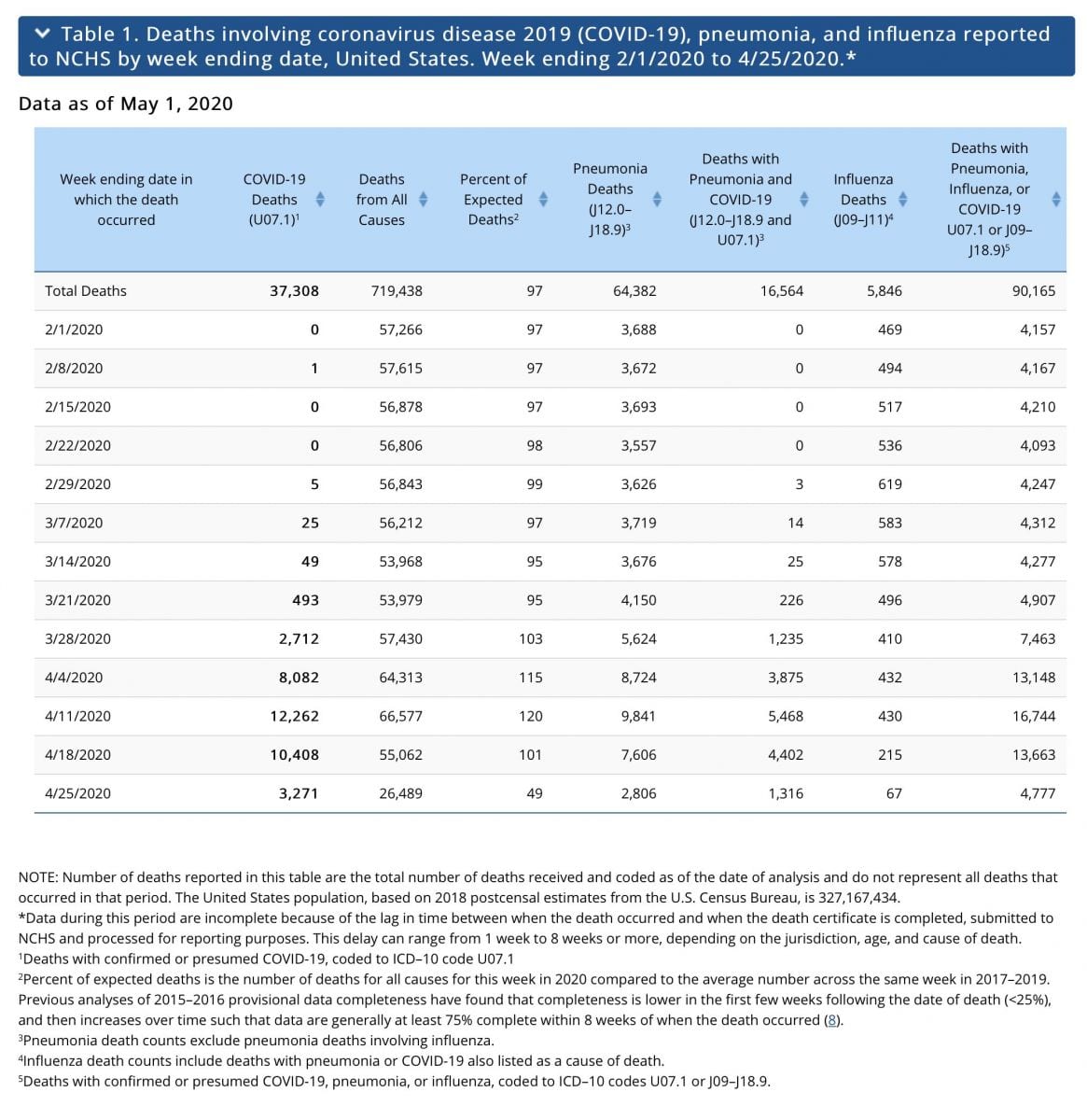What is going on with the CDC official coronavirus death toll figures?
Short answer? It’s unclear.
Speculation started running rampant online when Tim Young tweeted this:
Many quickly took notice and started asking questions.
Check these out:
We don't like to rely on what others SAY, so we went right to the source.
From https://www.cdc.gov/nchs/nvss/vsrr/covid19/index.htm, here is what you will find:

Visit the link yourself to see the entire page.
Confusion continues to run amok online, with many asking what is going on:
And many are getting angry:
Buzzfeed News, however, claims the speculation is completely wrong and the CDC did not make any such reivision.
Buzzfeed News claims the confusion stems from people not understanding the reporting, take a look:
Several tweets went viral on Saturday that falsely accused the Centers for Disease Control and Prevention of drastically revising down the number of COVID-19 deaths in the US, inflaming conspiracy theories that the coronavirus is not as serious as officials claim.
As of Saturday, the CDC says more than 64,000 people have died in the US, but the false tweets accused them of quietly cutting that figure in half.
The most prominent tweet came from right-wing media personality Tim Young.
Young linked to a provisional count of COVID-19 deaths from the National Vital Statistics System, an inter-governmental system which tracks births and deaths in the US and which on Friday night put the figure close to 37,000.
Many responses to Young's tweet accused the media of a conspiracy in ignoring the "true" death toll count.
But the table Young links to clearly states that data only covers the period from Feb. 1 to April 25.
Moreover, the National Vital Statistics System website makes clear that it has a significant lag in counting deaths because it relies on tabulating official death certificates it receives.
"It is important to note that it can take several weeks for death records to be submitted to National Center for Health Statistics (NCHS), processed, coded, and tabulated," reads a prominent disclaimer above the data. "Therefore, the data shown on this page may be incomplete, and will likely not include all deaths that occurred during a given time period, especially for the more recent time periods."
"Data during this period are incomplete because of the lag in time between when the death occurred and when the death certificate is completed, submitted to NCHS and processed for reporting purposes," reads another footnote.
In comparison, the CDC’s actual most up-to-date count of COVID-19 deaths is on a separate site and shows more than 64,000 people have died in the US.
As the CDC states, that tally is updated daily based on data received from state health bodies: "Case notifications were received by CDC from U.S. public health jurisdictions and the National Notifiable Diseases Surveillance System (NNDSS)."
Neither that CDC figure, nor the National Vital Statistics System page, have been revised down.
In its count, the CDC also includes cases where coronavirus was the probable cause of death, not simply the confirmed cause of death. As the CDC states, "A probable case or death is defined by one of the following: Meeting clinical criteria AND epidemiologic evidence with no confirmatory laboratory testing performed for COVID-19; Meeting presumptive laboratory evidence AND either clinical criteria OR epidemiologic evidence; Meeting vital records criteria with no confirmatory laboratory testing performed for COVID19."
Since the onset of the pandemic, coronavirus "truthers" have been pushing false narratives that claim the virus is concocted, largely overblown, or that health organizations are lying about how many people are really sick. Last month, a former Fox News commentator shared a video aiming to show that hospitals aren't as overwhelmed with COVID-19 patients as the media has portrayed.



Join the conversation!
Please share your thoughts about this article below. We value your opinions, and would love to see you add to the discussion!